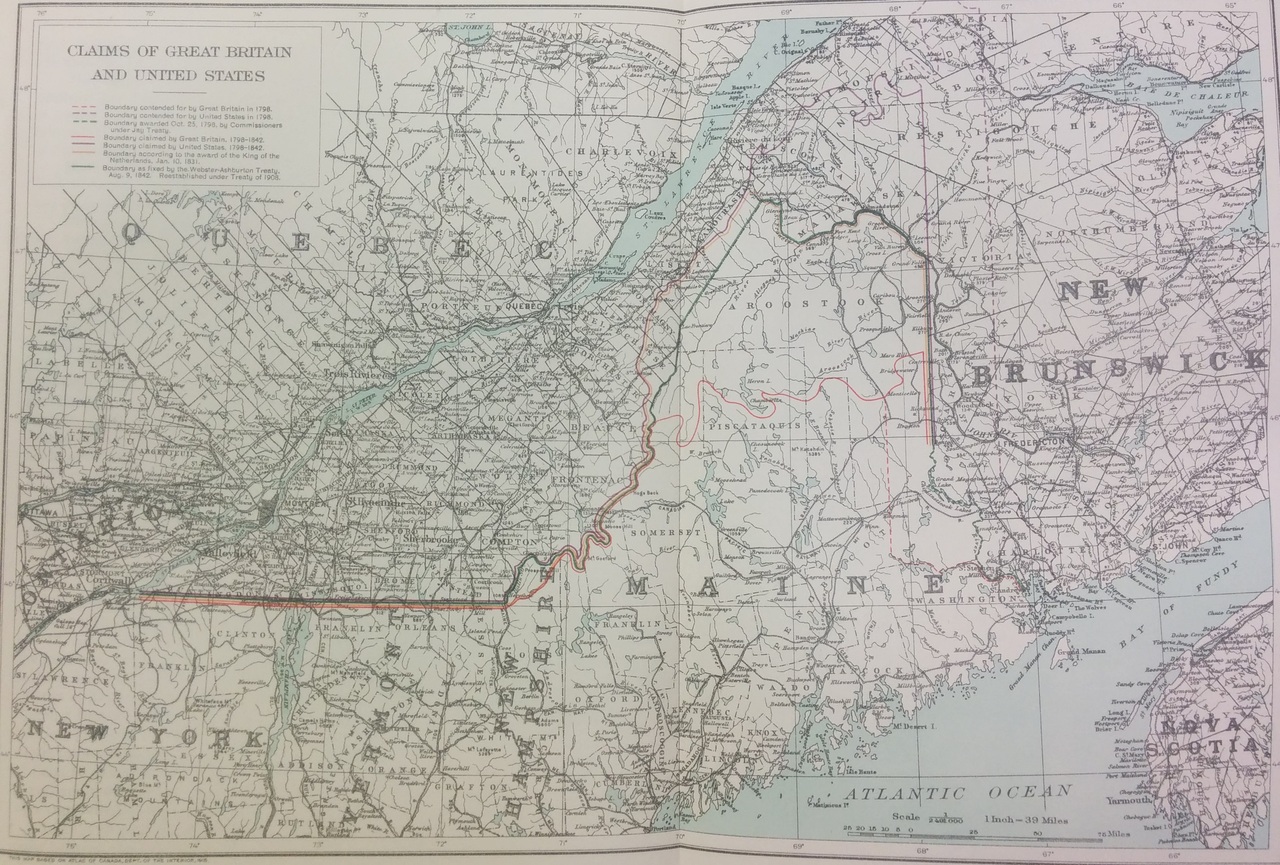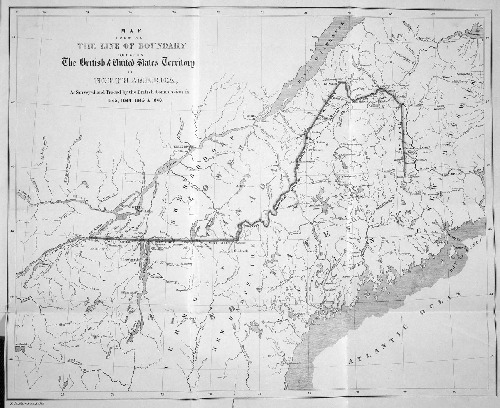Context: Uncharted Territory
Setting Boundaries
Land is a finite resource, and the struggle for ownership has often defined relations between countries. Such was the case for Great Britain and the United States in past centuries, when Canada was still composed of royal colonies. Treaty after treaty attempted to establish a boundary between the British possesions of Upper Canada (Ontario), Lower Canada (Quebec), and New Brunswick, and the United States.
In 1783 the Treaty of Paris ended the American Revolution, and set the 45th parallel, the St. Lawrence River, and the Great Lakes as the general border between British and American territory. Although it named the River St. Croix as an eastern border, neither side could agree on which river went by that name. Boundary commissions resulting from the Jay Treaty (1794) and the Treaty of Ghent (1814) made little progress on identifying the river or other natural features that had been referenced as boundaries. They consulted historical maps and walked in the wilderness without result. But is it surprising that surveyors did not succeed when even a king could not settle the matter? King Willem I of the United Netherlands served as arbitrator in 1830, yet his solution was not accepted.
Negotiations continued for the next decade without success. Meanwhile, tensions escalated along the New Brunswick and Maine boundary as British and Americans laid claim to valuable timber forests in the Aroostook War (though no battles were actually fought). Great Britain and the United States, wishing to preserve their beneficial trade relations, finally compromised in 1842 with the Webster-Ashburton Treaty. As part of this treaty, a commission representing the two nations would at long last demarcate the border.
The Commission Draws the Line
The joint boundary commission was physically demanding, worryingly expensive, and an exercise in cooperation. It was also a resounding success.
The commission officially opened its work season on June 1, 1843. It was led by American Commissioner Albert Smith and British Commissioner James Estcourt. Estcourt's team was composed of two astronomers, two engineers, and members of the Royal Sappers and Miners who had experience surveying. They came prepared with the tricks of the surveying trade: transits, altitude and azimuth instruments, box and pocket chronometes, sextants, thermometers, barometers, theodolites, chains, and compasses.
The task was simple - measure and mark the boundary - but the process was difficult. Estcourt and his men, who numbered up to 500 labourers during the busiest months, faced challenging conditions. The terrain they surveyed was by turns swampy and rugged. Since they were covering great distances they had to build supply houses along the route and constantly deliver supplies to camps. Days spent chopping trees in the summer heat and hauling loads in the winter weather called for men "whose energy and endurance were equal to any occasion," according to the official report.
The British and American parties coordinated their work. Initially they sent combined groups of surveyers, but once they established a trusting relationship they began doing sections separately. The process generally involved:
- Setting up astronomical stations to calculate latitude and longitude, and determine the azimuths to set the angle of the path
- Blazing (marking the path on trees)
- Cutting (chopping down a 30-foot swathe of trees to make a visible border)
- Setting up monuments along the boundary
However, things did not always go as expected. When surveying the South-West Line one party started at each end, planning to meet in the middle. The group setting out from Lake Pohenagamook could not use the proper astronomical equipment because of ridges blocking their view. To check their accuracy, every night they signalled their position with torches. The other party, at work 64 miles away, then instructed them to move left or right by firing flashes of gunpowder in a pan!
By 1945 the joint boundary commission had completed its monumental task, surveying more than 670 miles of wilderness from the mouth of the St. Croix River to the St. Lawrence River.

